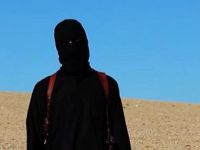Islamic state: the hand behind the terror
Damascus, (Prensa Latina) After the terror unleashed in Syria and Iraq by Islamic State (IS) there lies a structured machinery for years with one goal: to implement its radical vision of Islam with blood and fire. After the dazzling offensive of the terrorist organization in extensive areas of both countries, numerous news outlets and spy services tried to reveal the wheels of IS.

Roberto Castellanos Fernandez
However, the inability to enter the areas it controls and its secrecy caused all sorts of hypotheses on the subject, often conflicting with each other.
The announcement last year about the alleged wounds of self-proclaimed caliph Abu Bakr al Bagdadi in a bombing in Iraq, gave rise to numerous theses on his succession.
The Daesh (IS initials in Arabic) learned from the mistakes of other jihadist formations, particularly al Qaeda, and created a government in the shadows that includes numerous departments or ministries and dozens of provincial executives to manage the areas under their control.
Once a territory is conquered, the IS creates the structures that are no different from Western governments, to identify their radical vision and their crimes, says an investigation of the Consortium for Research and Analysis of Terrorism.
The result is a military unit structured to boost its particular jihad (holy war) and a decentralized management system through which it attempts to provide basic services to the population.
To finance its policy, the IS uses many means, from the sale of oil or collection of redemptions and taxes from the outside donations and sale of organs, as was recently reported by an Iraqi daily.
At the top is the self-proclaimed caliph and Commander of the Faithful, Abu Bakr al Bagdadi.
Born in the Iraqi city of Samarra, Ibrahim Awwad Ibrahim al Badri, his real name, he graduated in Islamic studies at the University of Baghdad and was imprisoned at Camp Bucca, an open US prison, after the invasion of Iraq in 2003.
There he met numerous detainees who today are his key staff, many of them military and officials of the overthrown president Saddam Hussein.
According to Soufan Group, a company specializing in intelligence information, under the direct command of al Bagdadi are Abu Muslim al Afari al Turkmani and Abu Ali al Anbari, who lead the operations in Iraq and Syria respectively.
This triumvirate is in charge of directing the Daesh, and it depends on the organization too, among them the Shura Council, a sort of office with the task of advising on political issues to Bagdadi and which transmits his orders.
Another key element is the so-called Council of Sharia, which aims to ensure that the laws and the actions of IS members are according to their particular view of Islam and radical.
This sector grants legal and religious justification to the Islamic state to murder, plunder or enslave those who oppose, especially minorities.
Below this level are the governors of tens of wilayas (provinces), divided between both countries.Al Baghdadi is the pastor, and his deputies are dogs that herd the sheep of IS, said Hisham al Hashimi, a security analyst who had access to documents of the organization seized by the Iraqi army.
Al Anbari and al Turkmani are the pillars of the al Baghdadi fortress. They are the ones who keep you in power, he estimated.
As part of the structure, each person has their specific role, ranging from the management of prisoners and transporting suicide bombers to the care of the families of those killed in battle or operations with explosive devices.
There are also communication departments, arms supplies, intelligence, among many others.
According to the British newspaper The Telegraph, the terrorist organization has about a thousand medium and top-level field commanders, all with military or security experience.
In the exercise of their duties, salaries range from 2 to 3 thousand dollars a month.
https://www.patrialatina.com.br/editorias.php?idprog=d41d8cd98f00b204e9800998ecf8427e&cod=14919
Subscribe to Pravda.Ru Telegram channel, Facebook, RSS!





